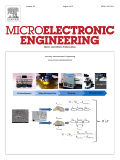
MICROELECTRONIC ENGINEERING
metrics 2024
Unveiling New Horizons in Atomic and Molecular Physics
Introduction
MICROELECTRONIC ENGINEERING is an esteemed journal published by Elsevier, focusing on the rapidly evolving fields of microelectronics and nanotechnology. It encompasses a wide array of topics, including atomic and molecular physics, condensed matter physics, and the engineering aspects of electronic, optical, and magnetic materials. With its impressive impact factor and recognition as a Q2 journal in several categories, it provides an invaluable platform for researchers and professionals to disseminate their groundbreaking findings. The journal has been instrumental in advancing our understanding and application of microelectronic technologies since its inception in 1983. Currently ranked highly within various specialized categories in Scopus, MICROELECTRONIC ENGINEERING offers targeted access to cutting-edge research, fostering innovation and collaboration in the world of electronic engineering and materials science. As we look towards the future, with convergence continuing to shape research until 2024, the journal remains a critical resource for those dedicated to pushing the boundaries of knowledge in these dynamic fields.
Metrics 2024
 0.50
0.50 2.60
2.60 2.50
2.50 111
111Metrics History
Rank 2024
Scopus
IF (Web Of Science)
JCI (Web Of Science)
Quartile History
Similar Journals

MRS Advances
Fostering Interdisciplinary Discoveries in Material ScienceMRS Advances, published by Springer Heidelberg, is an esteemed academic journal that serves as a vital platform for disseminating cutting-edge research in the fields of condensed matter physics, materials science, and mechanical engineering. With an ISSN of 2731-5894 and an E-ISSN of 2059-8521, the journal is hosted in Switzerland and encompasses an impressive spectrum of innovative studies that impact both theoretical and practical applications. Throughout its converged years from 2012 and continuing through 2024, MRS Advances has established itself with notable rankings, including Q4 in condensed matter physics and Q3 in several related categories. This journal not only enriches the academic community with its rigorous peer-reviewed articles, but also encourages open discussions that further advance research innovations. Although currently not designated as an open-access journal, its accessibility through institutional subscriptions ensures that professionals, researchers, and students can engage with the latest advancements in the material science arena. Emphasizing its relevance, MRS Advances is dedicated to fostering interdisciplinary collaboration and inspiring new discoveries within the global research community.

SEMICONDUCTORS
Unveiling the mysteries of magnetic materials.SEMICONDUCTORS, published by PLEIADES PUBLISHING INC, is a prominent journal that provides a platform for researchers and professionals in the fields of Atomic and Molecular Physics, Condensed Matter Physics, and Electronic, Optical and Magnetic Materials. With an ISSN of 1063-7826 and an E-ISSN of 1090-6479, the journal has been diligently disseminating knowledge since its inception in 1996 and continues to pave the way for innovative research until 2024. Although currently unclassified in the Open Access model, its influence is underscored by its rankings in Scopus, where it ranks in the 21st-22nd percentile across critical scientific categories. SEMICONDUCTORS serves as an essential resource for cutting-edge research, fostering a greater understanding of semiconductor materials and their applications, thereby assisting the scientific community in pushing the boundaries of technology and innovation.
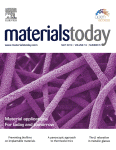
Materials Today
Connecting Researchers with Cutting-Edge DiscoveriesMaterials Today is a premier academic journal published by Elsevier Science Ltd, specializing in the dynamic fields of materials science, mechanical engineering, and condensed matter physics. Established in 1999, the journal has garnered an enviable reputation, consistently ranking in the Q1 category across multiple disciplines including mechanics of materials and general materials science, reflecting its influence and high-quality research output. With an impressive Scopus ranking—4th in both mechanical engineering and mechanics of materials, and 6th in condensed matter physics—Materials Today serves as an essential resource for researchers, professionals, and students seeking to stay at the forefront of developments in material innovations and applications. The journal is known for its commitment to publishing significant research findings and reviews, making it a vital platform for disseminating knowledge and fostering collaboration in the rapidly evolving materials field. Although it does not offer open access, its robust impact factor underscores the importance of the content published, ensuring wide visibility and citation among the academic community. Explore the rich tapestry of materials research with Materials Today, where groundbreaking insights pave the way for future technological advancements.
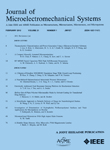
JOURNAL OF MICROELECTROMECHANICAL SYSTEMS
Exploring Cutting-Edge Technologies in MEMSThe JOURNAL OF MICROELECTROMECHANICAL SYSTEMS, published by the IEEE-Institute of Electrical and Electronics Engineers Inc, stands as a pivotal resource in the fields of Electrical and Electronic Engineering as well as Mechanical Engineering. With an ISSN of 1057-7157 and an E-ISSN of 1941-0158, this esteemed journal has been at the forefront of advancing microelectromechanical technology since its inception in 1992. As evidenced by its impressive Scopus rankings, holding a Q2 position in Electrical and Electronic Engineering and a Q1 status in Mechanical Engineering, the journal serves as a conduit for high-quality research and innovative applications in the microelectromechanical systems domain. Notably, it is well-regarded yet accessible, making it an essential resource for researchers, professionals, and students alike, who are eager to contribute to or stay informed on the latest advancements. Published in the United States, the journal covers a broad array of topics within its scope, ensuring a comprehensive overview of emerging trends and technologies. It remains dedicated to fostering scholarly communication and innovation in this rapidly evolving field.

Nanoscale Research Letters
Shaping the future through nanoscale discoveries.Nanoscale Research Letters, published by SPRINGER, is a leading open-access journal dedicated to the rapid dissemination of innovative research in the field of nanoscience and nanotechnology. Established in 2006, this journal provides researchers and professionals with a platform to share their groundbreaking findings across a broad spectrum of applications, including condensed matter physics and materials science. With an impressive Q1 ranking in both Condensed Matter Physics and Materials Science categories as of 2023, it asserts its position as a top-tier publication within the scientific community, bolstered by a 96th percentile rank in the Scopus database. Nanoscale Research Letters not only emphasizes the importance of nanotechnology research but also ensures that its findings are widely accessible, adhering to its open-access mandate. Scholars and students alike are encouraged to contribute to and engage with this dynamic resource, fostering collaboration and innovation in the ever-evolving world of nanoscience.
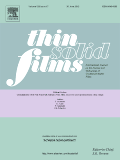
Thin Solid Films
Connecting Theory and Application in Thin Film StudiesThin Solid Films, published by ELSEVIER SCIENCE SA, is a highly regarded journal in the fields of materials science and physics, specifically focused on the properties and applications of thin films. Established in 1967, this journal has been a leading platform for disseminating research on surfaces, coatings, and advanced materials. With its consistent publication through the notable HIndex of scholarly impact, this journal showcases a diverse range of studies ranging from electronic, optical, and magnetic materials to novel surface and interface engineering. In recent evaluations, Thin Solid Films has achieved significant rankings, including a Q2 position in Materials Chemistry and Metals and Alloys, reflecting its relevance and importance in ongoing scientific discourse. Although it does not offer open access, it provides a vital resource for researchers, professionals, and students seeking to advance their knowledge and expertise in thin film technology. The journal's commitment to quality and innovation makes it an essential publication for anyone engaged in the field.
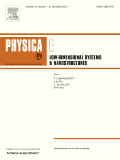
PHYSICA E-LOW-DIMENSIONAL SYSTEMS & NANOSTRUCTURES
Exploring the innovative realm of low-dimensional systems.PHYSICA E-LOW-DIMENSIONAL SYSTEMS & NANOSTRUCTURES, published by ELSEVIER, is a premier journal dedicated to advancing the field of condensed matter and nanoscience, focusing on the innovative properties and applications of low-dimensional systems. With an esteemed Q2 ranking in multiple categories including Atomic and Molecular Physics, Condensed Matter Physics, and Nanoscience for 2023, this journal serves as a vital platform for researchers and professionals aiming to disseminate and discuss cutting-edge research. Established in 1974 and converging its focus from 1997 onwards, PHYSICA E captures the evolving landscape of material science, making it a crucial resource for anyone invested in the dynamics of electronic, optical, and magnetic materials. Although the journal operates on a subscription basis, its broad accessibility and significant placement within Scopus rankings—such as being in the 83rd percentile for Condensed Matter Physics—underscore its importance within the academic community. Researchers and students alike will find this journal a cornerstone for fostering knowledge and collaboration in the fields of nanotechnology and low-dimensional physics.
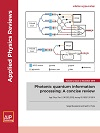
Applied Physics Reviews
Navigating the Landscape of Applied Physics AdvancementsApplied Physics Reviews, published by AIP Publishing, is a premier journal prominently positioned in the field of physics and astronomy. With an impressive impact factor that reflects its significance, this journal ranks in the 1st quartile (Q1) in 2023 and holds the 9th position out of 243 journals in General Physics and Astronomy according to Scopus, placing it in the 96th percentile of its category. Established as a vital platform for the dissemination of groundbreaking research and reviews, Applied Physics Reviews aims to bridge theoretical and experimental studies, enabling a comprehensive understanding of applied physics advancements. Although not open access, the journal provides a rich resource for researchers, professionals, and students keen on exploring the latest developments and trends within applied physics, offering insights that are crucial for both academic and industrial applications. With a converged timeline from 2014 to 2024, this journal continues to foster significant contributions to the field and encourages a collaborative dialogue among scholars and practitioners.

Micro and Nanostructures
Advancing the Frontiers of Material ScienceMicro and Nanostructures is a leading academic journal published by Academic Press Ltd - Elsevier Science Ltd, focusing on the cutting-edge fields of biomaterials, condensed matter physics, and electronic, optical, and magnetic materials. With an impact factor reflecting its rising status, the journal has achieved remarkable rankings within its categories, including Q2 in Condensed Matter Physics and Electronic, Optical and Magnetic Materials, and Q3 in Biomaterials, as of 2023. Spanning from 2022 to 2024, Micro and Nanostructures presents integral research that advances the understanding and application of micro- and nanostructured materials, thereby playing a crucial role for researchers, professionals, and students alike. As an open access publication, it ensures broad accessibility to groundbreaking studies that shape the future of material science. The journal's commitment to high-quality research and its strategic positioning as a premier source of knowledge in its domain make it an essential platform for the dissemination of innovative ideas and discoveries.
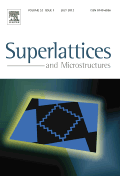
SUPERLATTICES AND MICROSTRUCTURES
Bridging theory and application in advanced materials science.SUPERLATTICES AND MICROSTRUCTURES is a premier journal dedicated to the exploration and dissemination of cutting-edge research in the fields of Condensed Matter Physics, Electrical and Electronic Engineering, and Materials Science. Published by Academic Press Ltd - Elsevier Science Ltd, this journal has established itself as an important platform for scholars and industry professionals to share their findings related to the design, fabrication, and application of superlattices and microstructured materials. With a commendable impact factor reflected in its rankings—positioned within the top quartile in Physics and Astronomy as well as Electrical and Electronic Engineering—it offers high visibility and influence in the academic community. The journal has covered significant contributions from 1985 to 2022, although access options have transitioned, making staying current essential for researchers and practitioners alike. This journal not only serves as a repository of knowledge but also fosters collaboration and innovation in materials science and related disciplines.